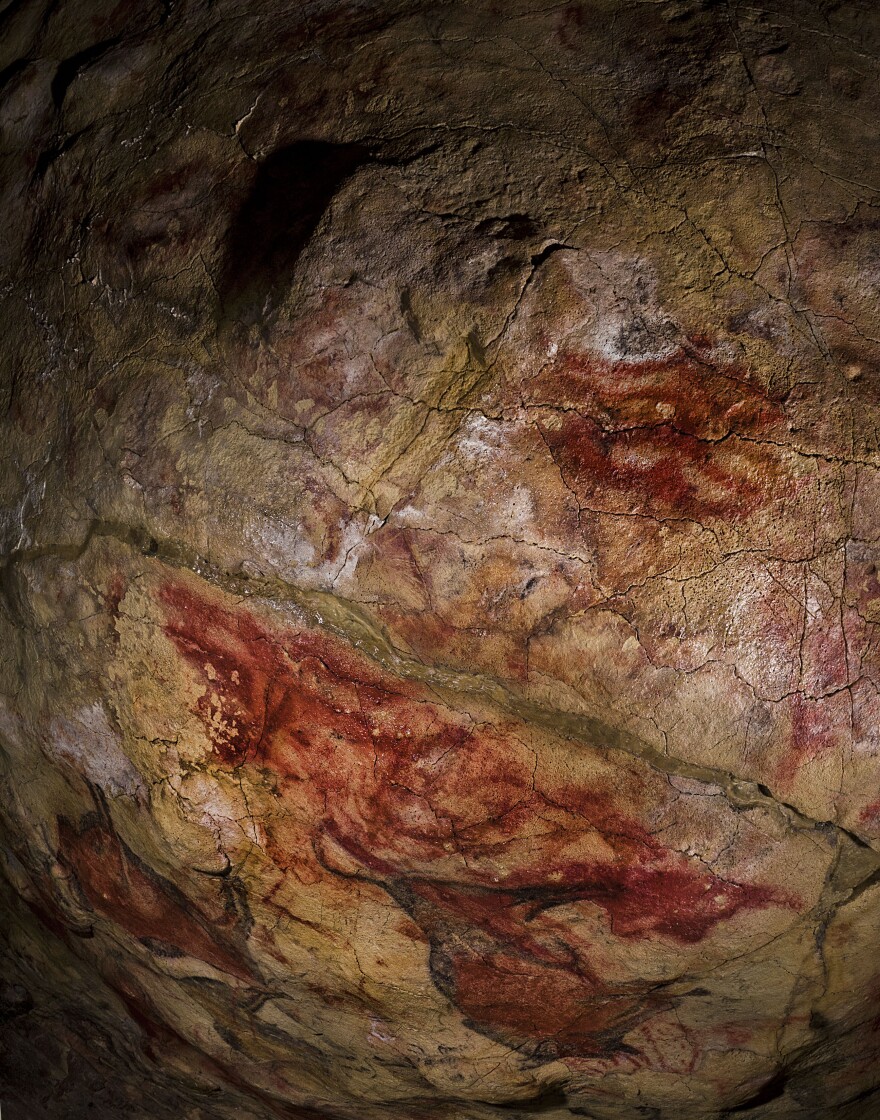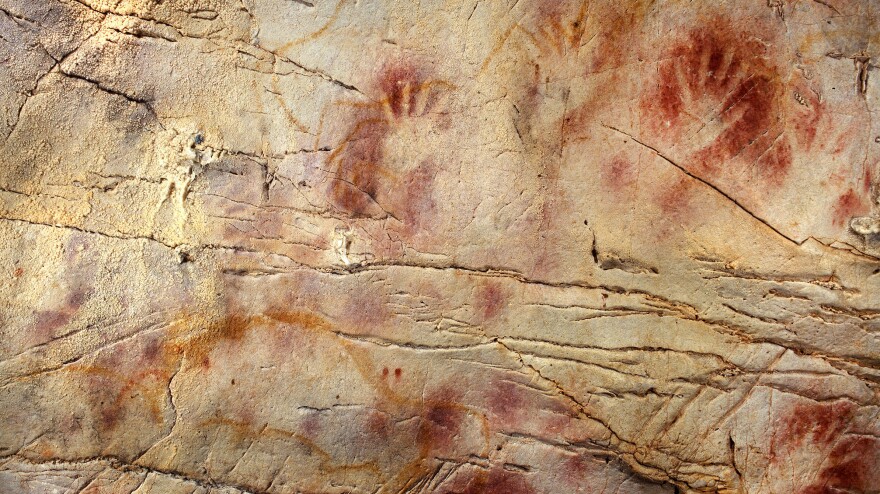The famous paintings on the walls of caves in Europe mark the beginning of figurative art and a great leap forward for human culture.
But now a novel method of determining the age of some of those cave paintings questions their provenance. Not that they're fakes — only that it might not have been modern humans who made them.

The first European cave paintings are thought to have been made over 30,000 years ago. Most depict animals and hunters. Some of the eeriest are stencils of human hands, apparently made by blowing a spray of pigment over a hand held up to a wall.
But now scientists are suggesting those aren't human hands, at least in some caves in Spain.
Alistair Pike, an archaeologist at the University of Bristol in England who used a novel technique to get new dates for some of those paintings, says they're older than people thought, and they may just predate the arrival of humans in Europe.
"What we are saying is that we must entertain the possibility that these paintings were made by Neanderthals," Pike says. Those were humans' closest relatives, but they are not our species.
Pike says some of these paintings in Spain are at least 40,800 years old. At that time, Neanderthals had been running around Europe for 200,000 or 300,000 years. Modern humans had just arrived from Africa.
Pike concedes that maybe modern humans arrived in Europe with palette and pigment in hand, ready to paint up the town.
But the paintings could be even older. Pike's technique dates the age of the calcium carbonate that naturally forms in layers on top of the paintings. It's kind of like nature's shellac. Obviously the paintings had to be made before the first layer formed.

Archaeologist Joao Zilhao from the University of Barcelona is part of the team that did the work. He says his gut tells him it's Neanderthal art.
"We can't be 100 percent certain that they did it," Zilhao says. "I think that there is a strong probability. My point is the evidence for symbolic behavior among the Neanderthals already exists."
Neanderthals did perform ritual burials. They made decorative beads and other ornaments. Pike also notes that DNA evidence now suggests that modern humans and Neanderthals interbred.
"Why should it be surprising that Neanderthals produced art?" Pike says.
It does surprise archaeologists like Pat Shipman, who has spent a lifetime studying symbolic behavior. She wonders why Neanderthals waited until about the time humans arrived to get the itch to paint.
"OK, Neanderthals had been there for 300,000 years, and they're not doing this," Shipman says. "If they are not doing it before, why would they suddenly start doing it at that point?"
Shipman notes long before humans made the trek from Africa to Europe, they had been making all sorts of symbolic artifacts — ocher hash marks on stone or symmetrical marks on ostrich eggs.
"I find it easiest to assume that people who are already doing that moved into more figurative representations than thinking that an entirely other species of people suddenly came up with making figurative art," Shipman says.
The research appears in the journal Science. Pike says he needs to find paintings a few thousand years older than he has so far to make his case for Neanderthal art. He and his Spanish colleagues are headed back to find it.
Copyright 2020 NPR. To see more, visit https://www.npr.org. 9(MDA3NTY5MTc2MDEzMDY5NDU2MjQ3NDZhOA001))



